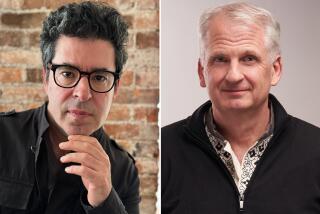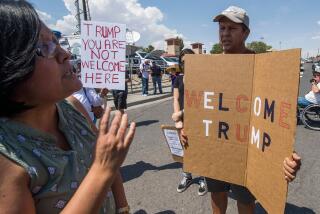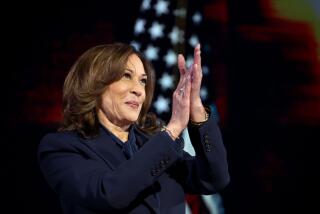Book review: ‘When the World Calls’ by Stanley Meisler
The surprising thing about the Peace Corps is that the institution still exists. After being formed by President John F. Kennedy on the fly in March 1961, it has endured Congressional challenges, internal political crises, skeptical Third World receptions and, perhaps toughest of all, Richard Nixon.
Yet it’s still there, providing a network of about 7,500 ground-level volunteers each year helping remote communities with construction projects, educational programs and healthcare delivery. If you believe in altruism, the Peace Corps could well be the best embodiment of that American spirit.
In his new and engaging history of the storied agency, “When the World Calls: The Inside Story of the Peace Corps and Its First Fifty Years,” journalist and former Peace Corps deputy director of evaluation and research Stanley Meisler takes us through a concise and affectionate look at its birth, and its various political battles. Meisler, a former Los Angeles Times foreign correspondent (though I once worked there, too, we have never met), turns a journalist’s eye on the overlapping squabbles and successes, as well as failures.
Despite his clear affinity for the Corps, Meisler doesn’t gloss over the problems, from ineffective volunteers to wrong-headed staffing goals and policies. His final chapter asks, “Does the Peace Corps Do Any Good?,” and it’s a good question to ponder. Statistically, much of the work done by volunteers has had limited effect on making broad changes in the quality of life for the world’s impoverished.
But, as Meisler argues, some gains can’t be measured by a bureaucrat’s spreadsheet. And in many ways, the Peace Corps’ gains might have come to the U.S., as legions of former volunteers used their experiences as springboards to public service careers, including such political figures as former Sen. Christopher Dodd, Carol Bellamy (who went from New York City politics to lead the agency for a time) and Donna Shalala, the former secretary of Health and Human Services.
Meisler also puts himself in the book, using some of his experiences to illustrate the political stresses within the agency. But that also cements the sense that this is an insider’s look at the agency. He sprinkles stories of individual volunteers, the good and the bad (one was convicted of murder), but also occasionally veers off into arcane bureaucratic battles, as though trying to be a repository of record.
Still, it’s a short book, at 272 pages, so even the meanders don’t derail it. And most of them say as much about the eras in which they took place as they do about the Peace Corps itself, including some poignant vignettes of volunteers getting the word, in the pre-instant communication age, about the murder of President Kennedy.
In Togo, which a few months earlier had undergone a coup and presidential assassination, volunteer Peggy Anderson heard a jeep stop outside her house late at night, and spotted fellow volunteer Sylvia Feinman and a Togolese businessman named Mr. Anthony inside. “Peggy rushed across the sandy, unpaved road. As she neared them, Sylvia said, ‘The president’s been killed.’ Peggy turned to Mr. Anthony, struggling to find the right words to console him for his second loss so soon after the first. ‘No,’ Sylvia said, ‘our President Kennedy.’”
The best way to view this book is as a survey course on the history of the Peace Corps. More detailed histories, and memoirs, have been published over the last few decades, and Meisler’s book adds little to that base of knowledge. But it does serve as a reader’s guide to that history; in that spirit it is a welcome addition.
Martelle is the author of “The Fear Within: Spies, Commies, and American Democracy on Trial.”
More to Read
Sign up for our Book Club newsletter
Get the latest news, events and more from the Los Angeles Times Book Club, and help us get L.A. reading and talking.
You may occasionally receive promotional content from the Los Angeles Times.







